Oka Tomoyuki’s spoil
Posted: 07/01/2014 Filed under: Books | Tags: black and white photobooks, Oka Tomoyuki, photobooks from Japan Leave a comment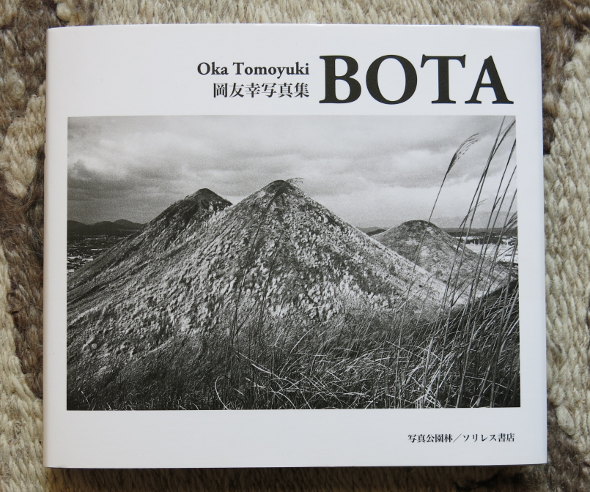
A botayama is a slag heap, so bota is slag — but no, Wikipedia says that the content of a “slag heap” isn’t slag; the whole thing is more properly a “spoil tip” and its content is spoil.
After explaining the word bota, the front of the obi says 石炭から石油へ、そして電子力へと移り変わってきた時代と、そこに暮らす人々をボタ山は静かに映し出す; or something like “At a time when coal has changed to oil and then to nuclear energy, spoil tips reflect the people who live there.”
The very first photo (like the very last) of this new book by Oka Tomoyuki is surely of coal. And there follow views of spoil tips. There are some dilapidated buildings, people walking over what might be spoil tips with sparsely added topsoil, people walking along country lanes, thicker vegetation, people taking naps, details of gardens, portraits. Some of the same people reoccur — surely these must be the photographer’s parents, this his brother. . . .
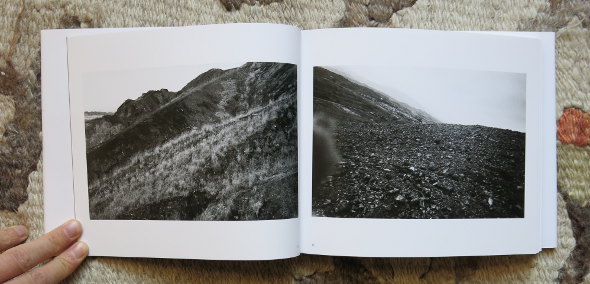
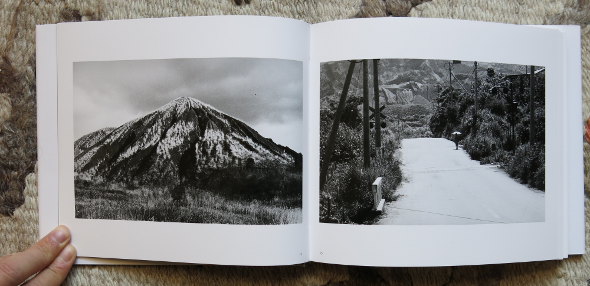
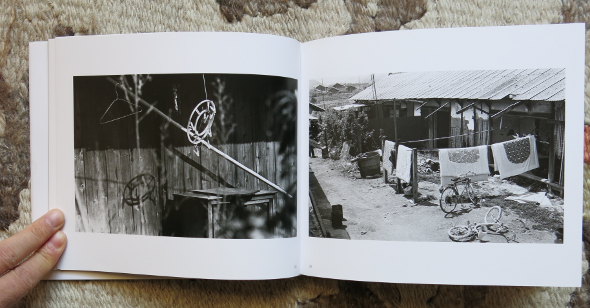
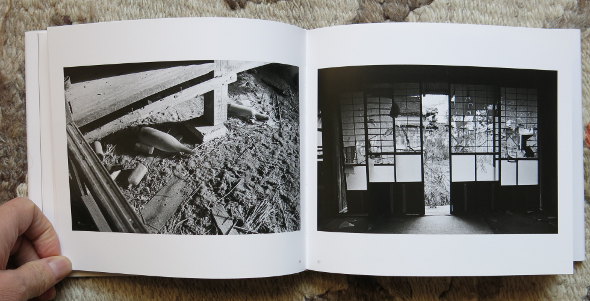
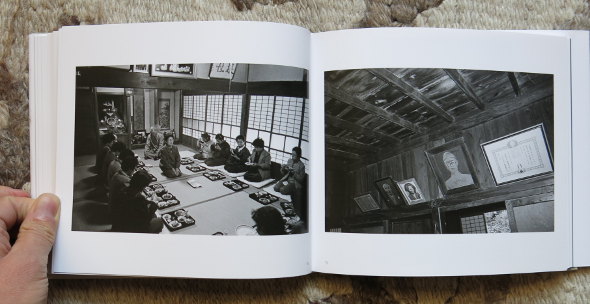
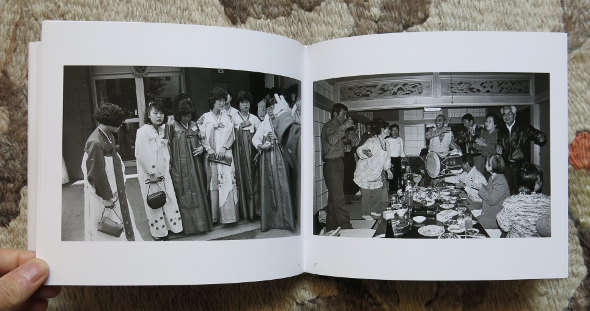
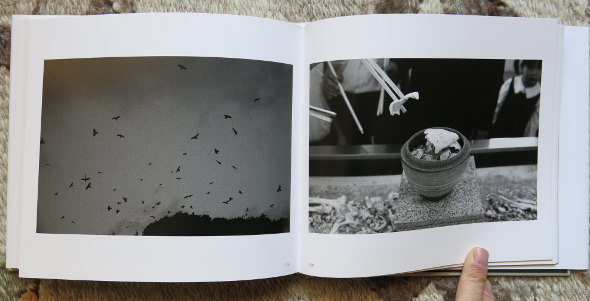
This hardback has 140 photos or so, each numbered. On a double-page spread in the back is a two-page memo of which photo is what — or rather, where and when. A typical example:
22 桂川町天道 1980
meaning that plate 22 is of a photo taken in Tentō, Keisen in 1980. And we’re told that the prefecture is Fukuoka when (as here) not otherwise noted. There’s never any explanation of what it is that we see, let alone any comment on it — just where and when.
But at least we have the placenames. A first glance suggests that most are in Fukuoka and the rest elsewhere in Kyūshū. Not so: a bunch of photos are from the coalmining area of Hokkaidō; and some are from such obviously coal-free areas as Okinawa and Tokyo. So instead the book seems to be a collection of whatever was important to Oka in almost forty years of photography, notably life above or near a coalfield that hasn’t been worked for over thirty years but was still being mined when he started out. It’s not in chronological order, and as constantly looking up the years of photos is tiresome the reader stops — or anyway, I stopped bothering, and instead did some more thinking for myself, noticing changing shapes of car, changing fashions and more before looking in the back.
Thanks to its format — 19 × 22 cm (and thus close to that of The Americans) — this intriguing book is very portable and I’ve enjoyed reading it on the train.
Oka Tomoyuki (岡 友幸). Bota. Tokyo: Shashin Kōen-rin, 2013. ISBN 978-4-9906656-4-7
Shashin Kōen-rin (写真公園林) means “photograph park wood” (“wood” as in “this dark wood“). It’s run by the photographer Hama Noboru (perhaps best known for his giant book Vacant land 1989). On the rear of the book, the obi proudly lists two other books from the same publisher: one (by Hama) was published in 1990 and the other (by Ōshima Hiroshi) in 1987. Sales are via Sot l’y laisse (ソリレス書店), which hasn’t yet got around to mentioning Bota on its Facebook page. The book is distributed in Japan by Tsubame (ツバメ出版流通) (whose name means “swallow”).
Sales page at Nite-sha; sales page at HMV.
The only biographical info I can find about Oka is on this PDF from Tsubame about the book. My translation:
Photographer. Lives in Fukuoka city. Participated in the founding and running of Photo Gallery PUT (Shinjuku, Tokyo), 1976–79. From 1984 to 1986, engaged in the editing and production of the ten-volume Shashin-man’yō-roku Chikuhō (写真万葉録・筑豊) [overliterally, “Ten-thousand-photograph record of Chikuhō“]. Author of Ueno Eishin no shōzō (上野英信の肖像) [“Portrait of Ueno Eishin“] (1989), Boku no Ajia chizu (ぼくのアジア地図) [“My map of Asia”] (1995), the five-volume digital photo collection Asia in my eyes, and (jointly) of Kaze no michizure (風の道づれ) [“Companion(s) of the wind”] (1991). Author’s web page “Gallery 36EX”: http://www.36ex.com.
— though 36ex.com doesn’t seem to mention the book or even its photographer.
Japan’s coalmines have given rise to a great amount of rewarding photography and art (as well as film and more). The best one-volume introduction I know of is the hefty 2009 exhibition catalogue の美術・写真・グラフィック・映画 ‘文化’資源としての展 (“Yama” no bijutsu, shashin, gurafikku, eiga: ‘Bunka’ shigen toshite no “tankō” ten) = The coal mine as cultural resource: Art/photography/graphic arts/film of Japanese coal mines (OCLC 525397491, mostly in Japanese only, but partly also in English translation). If the “Superflat” drivel currently feted by Fine Art idiocracy has you nodding off, wake up with Yamamoto Sakubei, Senda Umeji and more.
Almost totally irrelevant to anything above, but demanding a link all the same: Tokyo Photo Travel Guide part 2: Shinjuku Camera Shop walk. Excellent! Come to Japan and bring your monies. Somewhere in that same area thirty-something years ago was Photo Gallery PUT.